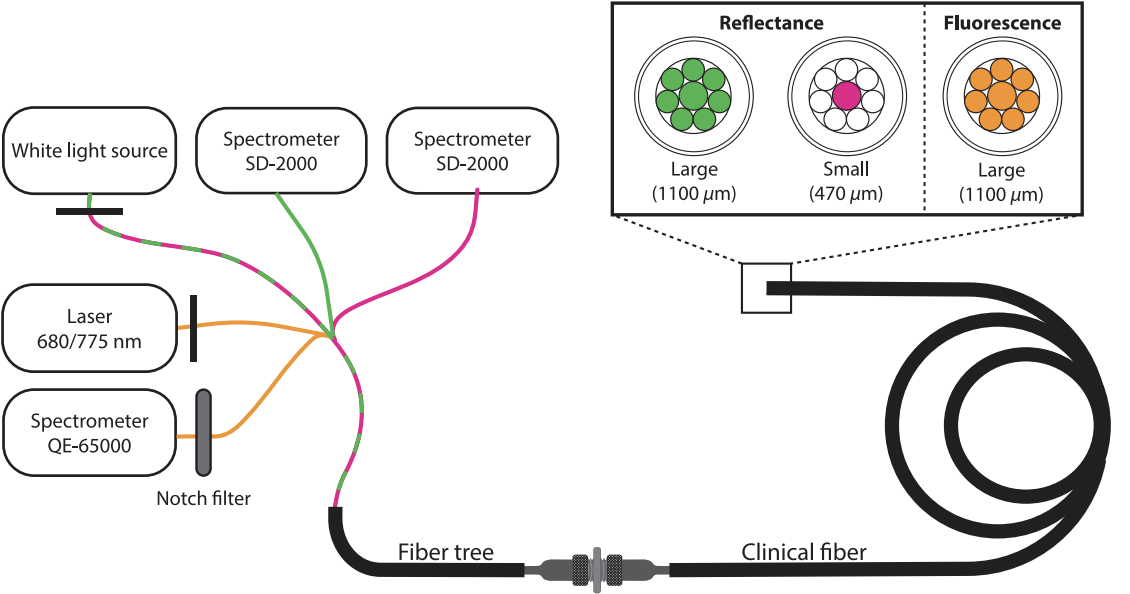New publication by Schmidt et al. in Journal of Biomedical Optics
The article entitled “Characterizing factors influencing calibration and optical property determination in quantitative reflectance spectroscopy to improve standardization” can be found here.
Abstract
Significance: The combination of reflectance and fluorescence spectroscopy allows the determination of tissue optical properties and the calculation of the intrinsic fluorescence in vivo. These parameters can discriminate between tissues and may allow the discrimination of malignant from benign tissue. While this approach has significant clinical potential, the lack of standardization and quality assessment prevents the upscaling of research.
Aim: Investigate which factors influence device calibration and tissue optical property determination. Improve system quality assessment and allow upscaling of the clinical research using multidiameter single fiber reflectance/singe fiber fluorescence spectroscopy.
Approach: Two studies, one phantom based on uniform calibrations and skin measurements and a clinical study including clinical calibrations. The first validates the effect of factors under identical conditions and the effect of calibration quality on the optical property determination of skin. The second shows the effect of different system configurations and the performance of the system and probe over an extended period.
Results: Phantom calibrations showed stability over a period of 20 weeks except for a 16-week-old intralipid phantom which showed a significant difference (at least p = 0.0032) for all five probes evaluated. For clinical calibrations, only the fiber tree had a significant influence (probe 4: p < 0.000001 and probe 5: p = 0.00038) on the calibration quality. Interestingly, no degradation of probe performance was detected over a period of 21 months despite the exposure to stress during clinical measurements. Calibration quality affected μs′ and the power law scattering exponent, but the degree of the influence was different per fiber.
Conclusions: Intralipid phantom quality and fiber tree performance are the main factors influencing the calibration quality. Probe and user performance did not show any effect, which makes the upscaling of research to multicenter trials easier. A high-quality assessment procedure should be implemented to track changes during clinical trials.
Citation: Iris Schmidt, Wouter B. Nagengast, Dominic J. Robinson, “Characterizing factors influencing calibration and optical property determination in quantitative reflectance spectroscopy to improve standardization,” J. Biomed. Opt. 27(7) 074714 (7 April 2022) https://doi.org/10.1117/1.JBO.27.7.074714

